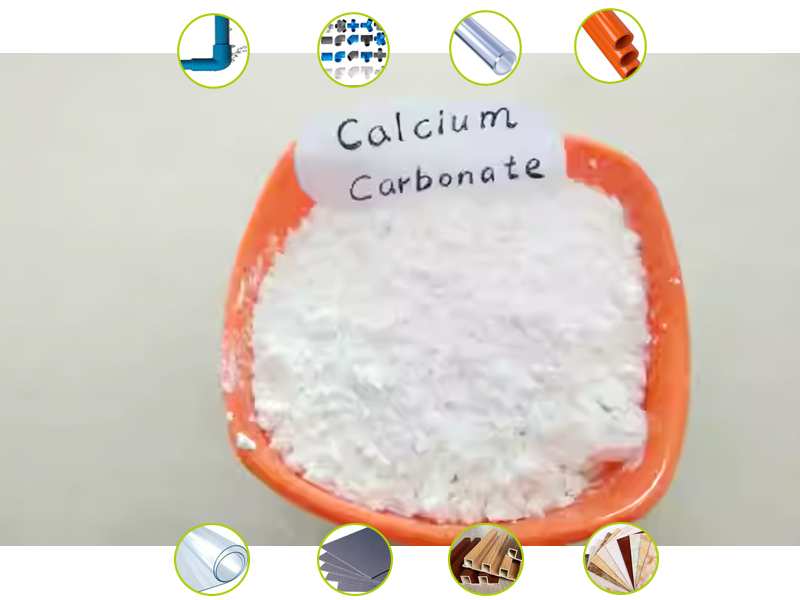What is the difference between light and heavy calcium carbonate?

Light calcium carbonate (light calcium carbonate) and heavy calcium carbonate (heavy calcium carbonate) in the application of PVC mainly have the following differences.
Production efficiency: light calcium due to fluffy, in the filling of PVC products, filling ratio over a certain limit, easy to produce in the lower hopper ‘bridge’ phenomenon, resulting in the material is not smooth, seriously affecting production efficiency. The heavy calcium particles are looser, mixed with PVC materials, better fluidity, not like light calcium in the lower hopper to produce the ‘bridge’ phenomenon.
Compatibility and use of treatment agents: Because plastics belong to organic polymers and calcium carbonate belongs to inorganic compounds, light calcium and heavy calcium and plastic compatibility are not good. In order to make calcium carbonate have better compatibility with the filled plastics, it is usually necessary to organicise the calcium carbonate and use plasticisers, lubricants, coupling agents and other additives. Heavy calcium carbonate has a lower oil absorption value, so the amount of activation aids used can be reduced in the same proportion of alternative plastic formulations.
Crystal structure and stacking state: the particle size of light calcium is date-pit shaped under full dispersion, the long diameter is about 5~12μm, the short diameter is 1~3μm, and the average particle size is 2~3μm. after crushing and grading, the particle shape of heavy calcium is irregular but the particle size is more uniform, and the dispersion is better. The stacking density of heavy calcium is larger, generally 0.8-1.3g/cm³; while the stacking density of light calcium is smaller, mostly 0.5-0.7g/cm³.
Economy and processing performance: The application of both light calcium and heavy calcium in plastics can reduce the cost of raw materials and improve certain properties of plastics. Heavy calcium has a lower oil absorption value, so in the same proportion of alternative plastic formulations, the use of activation aids can be reduced, thereby reducing processing costs.
Light calcium carbonate and heavy calcium carbonate are also produced differently:
Light calcium carbonate is prepared by chemical synthesis, usually by calcining limestone raw materials to generate lime and carbon dioxide, and then add water to digest lime to generate lime milk, carbon dioxide carbonation of lime milk to generate calcium carbonate precipitation, after dehydration, drying and crushing.
Heavy calcium carbonate is produced by crushing natural calcite, marble, chalk, shells and other minerals directly by mechanical methods.